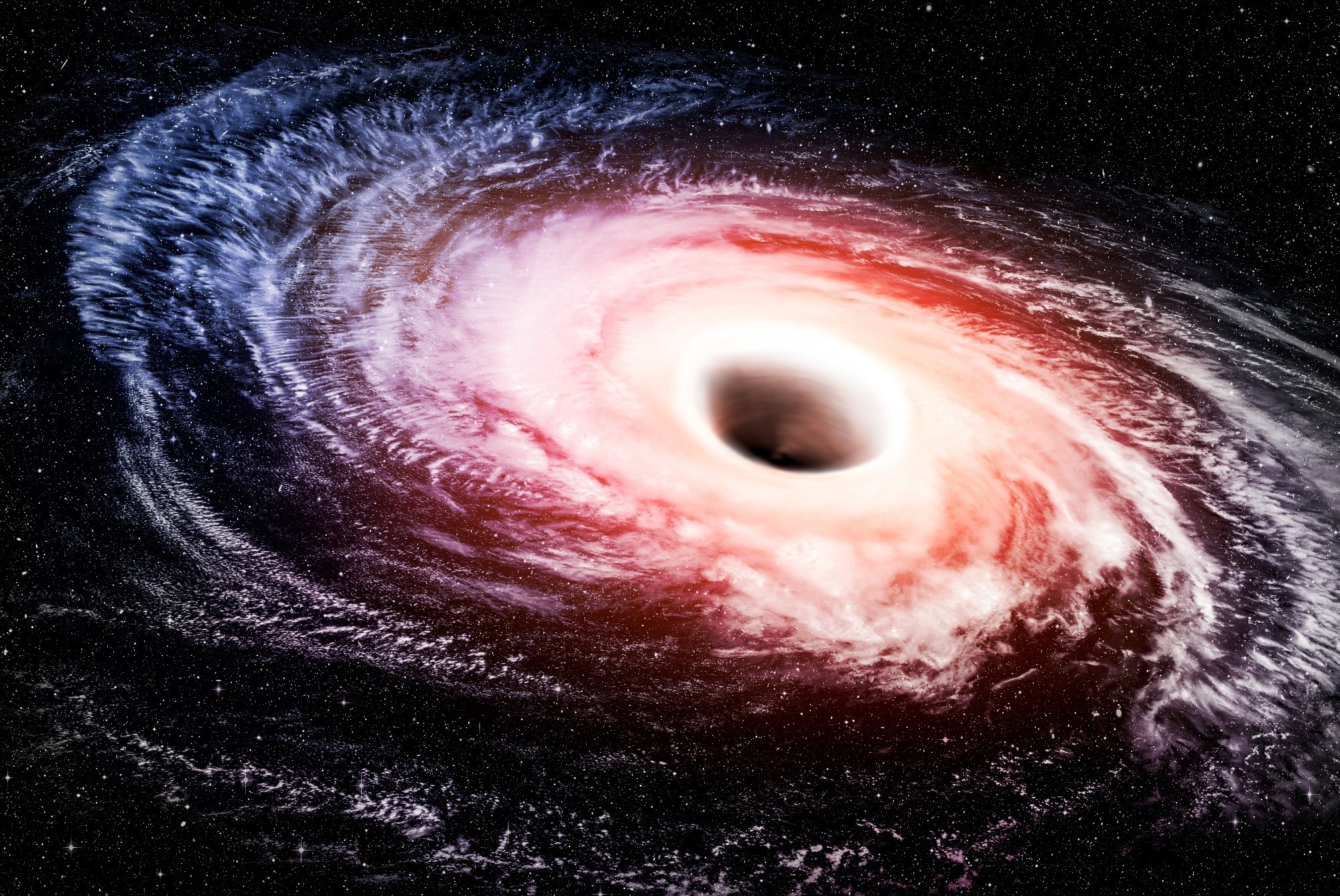Through the examination of the optical to extreme ultraviolet radiation produced by the accretion of supermassive black holes at the centers of quasars, Associate Professor Zhenyi Cai and Professor Junxian Wang from the Department of Astronomy at the University of Science and Technology of China (USTC) of the Chinese Academy of Sciences (CAS) have discovered that their spectral energy distribution is independent of the intrinsic brightness of quasars, reversing the conventional wisdom.

Image Credit: REDPIXEL.PL/Shutterstock.com
Additionally, the study reveals that the average extreme ultraviolet spectral energy distribution of quasars significantly deviates from the expectations of the conventional accretion disk hypothesis. This finding refutes the conventional theory and offers strong evidence favoring theories that include broad accretion disk winds. The findings were made available online in Nature Astronomy on October 5th, 2023.
Quasars are a type of very brilliant extragalactic object with enormous supermassive black holes at their cores that constantly eat the gas in their host galaxies’ core regions. The enormous gravitational potential energy is released on the gas’s accretion disk, converting it into thermal energy and electromagnetic radiation, resulting in an unusually luminous galactic nucleus. Quasars are sometimes known as “cosmic behemoths” because of their extremely high intrinsic brightness.
According to classic accretion disk theory, the well-known “big blue bump” in the spectral energy distribution is produced by accretion disks, with the peak predicted in the extreme ultraviolet. The lower the predicted temperature of the accretion disk and the softer the extreme ultraviolet spectrum, the greater the mass of the center black hole.
The renowned Baldwin Effect, which appears to be compatible with the traditional accretion disk concept, has demonstrated that more brilliant quasars (with higher supermassive black hole masses) have substantially weaker emission lines (explained by softer extreme ultraviolet spectra).
The study, conducted by Associate Professor Zhenyi Cai and Professor Junxian Wang, focuses on the optical-to-ultraviolet spectral energy distribution of large sample quasars. This study utilizes observational data from the ground-based SDSS and space-based GALEX, controlling for the incompleteness of the ultraviolet detection.
The researchers made a significant discovery regarding quasars. They found that the average ultraviolet spectral energy distribution of quasars remains consistent regardless of their intrinsic brightness. This finding not only implies that variations in intrinsic brightness cannot account for the Baldwin effect but also raises questions about the accuracy of standard accretion disk theory predictions.
Simultaneously, the researchers put forth a new hypothesis to explain the Baldwin effect: brighter quasars exhibit reduced accretion disk temperature fluctuations, which in turn hinder the formation of emission line clouds.
Furthermore, the study accounts for intergalactic medium absorption effects and reveals that the average extreme ultraviolet spectrum of quasars is softer than previous research indicated. This disparity presents a notable challenge to the standard accretion disk model but aligns closely with predictions from the model incorporating an accretion disk wind. This finding suggests the widespread existence of disk winds in quasars.
This research has extensive implications for a better understanding of supermassive black hole accretion mechanics, black hole mass development, cosmic reionization, the genesis of broad-line areas, extreme ultraviolet dust extinction, and other topics.
Satellite projects with ultraviolet detection capabilities, such as the Chinese Space Station Telescope (CSST, http://nao.cas.cn/csst/), will considerably improve our understanding of the physical properties of quasars and similar celestial objects.
Journal Reference:
Cai, Z.-Y., et al. (2023) A universal average spectral energy distribution for quasars from the optical to the extreme ultraviolet. Nature Astronomy. doi:10.1038/s41550-023-02088-5.